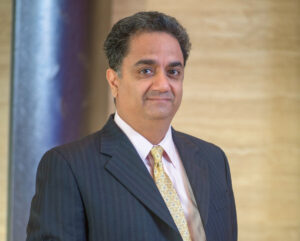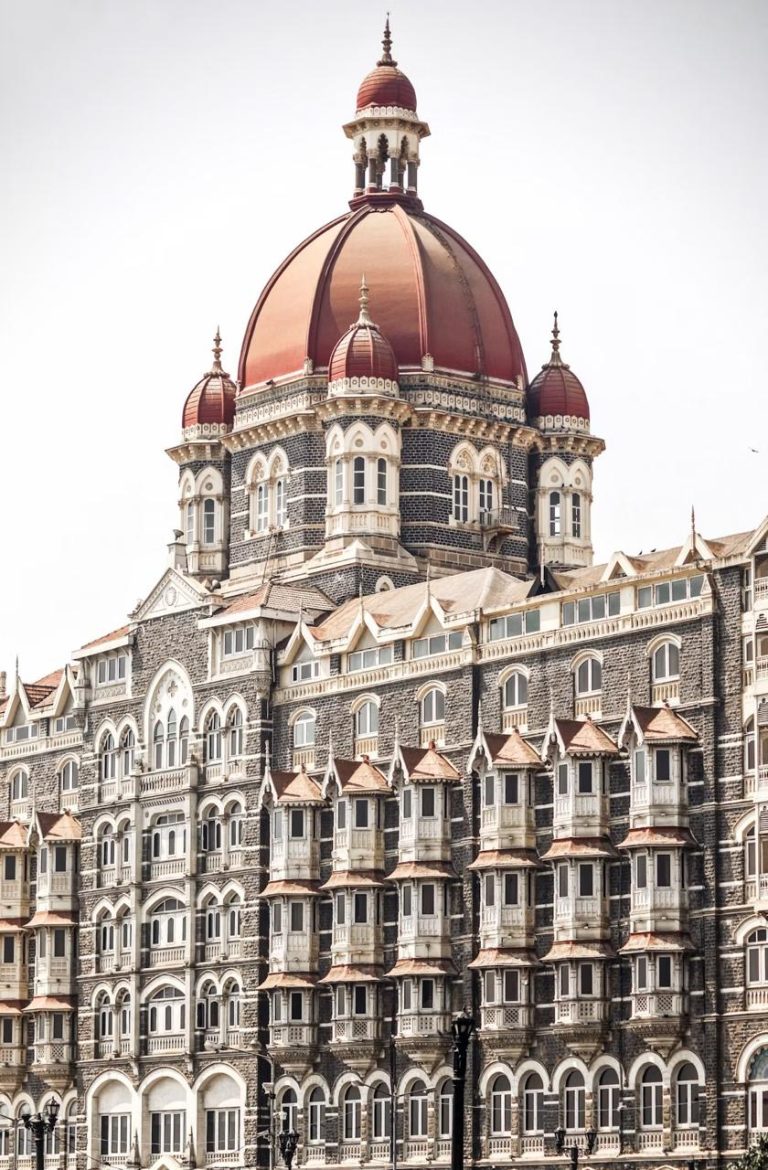‘Leisure and getaway destinations look promising and will mostly see a surge in popularity’
 As the hospitality industry navigates an ever-evolving landscape, Manav Thadani, Co-founder , Hotelivate, shares his nuanced yet optimistic outlook for 2025. With a focus on performance metrics like RevPAR, ARR, and occupancy rates, Thadani explores how urban and leisure markets are poised to evolve. He also delves into the continued dominance of domestic travel over international travel, highlighting its impact on the industry.
As the hospitality industry navigates an ever-evolving landscape, Manav Thadani, Co-founder , Hotelivate, shares his nuanced yet optimistic outlook for 2025. With a focus on performance metrics like RevPAR, ARR, and occupancy rates, Thadani explores how urban and leisure markets are poised to evolve. He also delves into the continued dominance of domestic travel over international travel, highlighting its impact on the industry.
What are your expectations for the hospitality industry in terms of RevPAR, ARR, and occupancy rates in 2025?
The hospitality industry may lack a crystal ball for precise forecasting, but current indicators suggest a nuanced yet optimistic outlook. We also feel that major urban markets such as Mumbai, Delhi, Bengaluru etc. to see higher occupancies than nation-wide average performance while occupancy in other cities are expected to remain relatively stable, with minor fluctuations across various segments. Meanwhile, Average Room Rates (ARR) are anticipated to grow at a modest single-digit percentage, reflecting cautious yet steady market confidence. Leisure markets are expected to experience a meaningful revival by next winter, building on gradually improving travel sentiment. This winter has been relatively subdued, with muted activity across many leisure destinations.
What is your perspective on the growth trajectory of domestic and international travel in 2025? Do you foresee domestic travel continuing to dominate over international travel in shaping the hospitality landscape?
Yes, we observe that domestic travel continues to dominate over international travel, a trend that has firmly established itself in recent years. In 2023, inbound travel struggled to regain its footing, and while 2024 saw slight improvements, the recovery was far from robust. Even now, the pace and trajectory of international travel’s return remain uncertain, leaving many industry stakeholders perplexed. Global geopolitical tensions and fluctuating health guidelines in certain parts of the world have created an environment where inbound travel remains unpredictable. For the hospitality industry, this presents both challenges and opportunities as now the focus has shifted toward catering to the domestic traveller.
What trends or innovations do you foresee shaping the hospitality landscape in the New Year?
Alternate accommodations will continue to attract domestic tourists. Major hospitality players are increasingly launching lifestyle brands like Tribute (Marriott), Voco (IHG) and Storii (ITC Hotels) catering to evolving guest preferences. Leisure and getaway destinations look promising and will mostly see a surge in popularity, offering intimate properties with smaller inventories but rich, immersive experiences. This trend underscores the shift toward personalization and high-quality stay experiences.
‘We are witnessing an increasing shift towards secondary cities and off-the-beaten-path destinations’
 Suhil Kannampilly, CEO, The Fern Hotels & Resorts,shares an optimistic outlook on the sector’s growth trajectory. With a focus on RevPAR, ARR, and occupancy rates, Kannampilly highlights how rising domestic tourism and experiential travel are reshaping the industry. Kannampilly also underscores the importance of government policy reforms and infrastructure development to unlock the full potential of tier-II and tier-III markets.
Suhil Kannampilly, CEO, The Fern Hotels & Resorts,shares an optimistic outlook on the sector’s growth trajectory. With a focus on RevPAR, ARR, and occupancy rates, Kannampilly highlights how rising domestic tourism and experiential travel are reshaping the industry. Kannampilly also underscores the importance of government policy reforms and infrastructure development to unlock the full potential of tier-II and tier-III markets.
What are your expectations for the hospitality industry in terms of RevPAR, ARR, and occupancy rates in 2025?
As we approach 2025, I am optimistic about the direction the hospitality industry is headed. RevPAR is expected to see steady growth, driven by both higher occupancy rates and ARR. Domestic tourism will continue to be a key growth driver, with travelers increasingly opting for weekend getaways, staycations, and longer vacations. We are witnessing an increasing shift towards secondary cities and off-the-beaten-path destinations, and I believe these markets will experience the most significant occupancy growth. MICE and weddings will play an increasingly important role in driving demand. As businesses resumes face-to-face events, MICE tourism will provide a significant boost to occupancy rates in major cities. Weddings, especially destination weddings, are also contributing to higher occupancy and ARR, with couples opting for premium experiences in luxury and leisure-focused locations. These events tend to drive higher spend per guest, contributing directly to RevPAR growth.
In terms of ARR, I foresee a robust increase as travelers increasingly seek premium, personalized experiences. There is a growing demand for wellness retreats, eco-tourism, and experiential stays, and guests are willing to pay more for unique, tailored offerings. The rise in operational costs, such as labour and materials, will inevitably lead to price increases, particularly in urban markets. However, hotels that provide exceptional experiences—whether in sustainability or cultural immersion—will still be able to command competitive ARRs without deterring demand. Tier-II and tier-III cities are seeing a rise in demand, and with more travelers opting for workations, we expect occupancy to rise further in locations that offer flexible workspaces and extended stays.
What specific policy changes or support do you expect from the Ministry of Tourism and other government bodies to enhance the growth and global competitiveness of the hospitality sector in India?
The Ministry of Tourism and government bodies are crucial stakeholders in shaping the future of the hospitality industry, and their continued support will be pivotal as we look to 2025. I hope to see an acceleration in policy reforms that enhance ease of doing business, including more streamlined regulations related to hotel classification, licensing, and taxation. This will not only encourage investment but also help businesses scale more efficiently.
Further, there should be a focus on building infrastructure in underdeveloped regions, particularly in tier-II and tier-III cities. These areas hold immense potential, and infrastructure development can make them viable options for domestic and international travelers alike. Beyond physical infrastructure, digital infrastructure should also be prioritized, including the development of smart cities that can integrate technology seamlessly into the travel experience, enhancing convenience for guests and operators.
Moreover, there is a growing need for policies that foster sustainability. As the hospitality sector increasingly embraces eco-tourism and sustainable practices, government support in the form of incentives for green certification, renewable energy adoption, and waste management solutions will be invaluable. Lastly, continued investment in skill development and training initiatives will be essential to ensure the workforce is equipped to meet the rising expectations of the modern traveller.
How do you plan to leverage the increasing demand for experiential travel and domestic tourism in 2025?
The surge in experiential travel and domestic tourism presents a significant opportunity for us at The Fern Hotels & Resorts. We are already in the process of innovating our offerings to meet the evolving preferences of today’s travelers. In 2025, we will focus on creatingmore personalized and immersive experiences that go beyond traditional hotel stays. For example, we are expanding our portfolio of wellness retreats, nature-focused getaways, and cultural explorations that resonate with the growing desire for meaningful and enriching travel experiences.
Given the increasing importance of sustainability, we are also incorporating eco-friendly practices across all our properties, from sustainable sourcing of food to energy-efficient infrastructure. Our ‘green’ initiatives are particularly appealing to domestic travelers who are becoming more conscientious about their environmental impact. For instance, our properties located in offbeat destinations like the Western Ghats or Rajasthan’s desert retreats are designed to offer serene experiences while promoting environmental conservation. Guests can participate in activities like nature walks, bird watching, and conservation initiatives, which allow them to directly contribute to local ecosystems while enjoying a rejuvenating stay. Additionally, we will be enhancing our services for ‘workations,’ with bespoke packages that provide a blend of leisure and productivity for the growing number of professionals opting for extended stays in non-urban settings. Our properties in scenic, tranquil locations are ideal for those blending work and leisure. By providing high-speed internet, co-working spaces, and the option for extended stays, we are well-positioned to capture this market, enabling guests to work remotely while experiencing the best of India’s diverse landscapes.
We are dedicated to fostering an experiential environment, enriched with a strong sense of belonging and a touch of local flair. Our Zinc Journey by The Fern accommodations are renowned for their sophisticated interiors and impeccable style, ideal for today’s traveller looking for serene lively escapades. Each property exudes elegance and offers a range of unique experiences with attention to detail and designed to leave a lasting impression. Similarly, the recently launched, The Fern Crown Collection immerses guests in an unparalleled realm of experiential exclusivity, redefining benchmarks of sophistication and refinement. At this curated selection of top-tier Fern hotels & resorts, every moment is elevated through thoughtfully tailored experiences that transcend traditional notions of comfort and opulence. The collection reimagines luxury as more than mere indulgence; it is an immersive journey where every service is meticulously crafted to resonate with the unique desires of discerning travellers.
On a broader scale, we are also working to position The Fern Hotels & Resorts as a key player in the community-based tourism space. By working closely with local artisans, indigenous communities, and regional tourism boards, we aim to provide authentic cultural experiences, thereby encouraging travelers to not just visit a place but truly immerse themselves in it.
‘India’s tourism sector should be at the forefront of policy development’
 Girish Divekar, Director of Sales and Marketing at The Westin Hyderabad Mindspace, shares his optimistic outlook for Hyderabad’s hospitality market. With the city witnessing a remarkable 21% growth in RevPAR in 2023, Hyderabad continues to thrive as a hub for IT development and Global Capability Centers (GCCs), driving corporate travel and boosting Average Daily Rates (ADR).
Girish Divekar, Director of Sales and Marketing at The Westin Hyderabad Mindspace, shares his optimistic outlook for Hyderabad’s hospitality market. With the city witnessing a remarkable 21% growth in RevPAR in 2023, Hyderabad continues to thrive as a hub for IT development and Global Capability Centers (GCCs), driving corporate travel and boosting Average Daily Rates (ADR).
What are your expectations for the hospitality industry in terms of RevPAR, ARR, and occupancy rates in 2025?
Looking ahead to 2025, my expectations for the hospitality industry are positive, driven by India’s strong economic growth and increasing global focus on the country. Based on current trends, all three key performance indicators—Occupancy, ADR (Average Daily Rate), and RevPAR (Revenue per Available Room)—are expected to show upward momentum. India has already experienced a 3% increase in occupancy, a 7.5% rise in ADR, and a 10.5% growth in RevPAR through 2023 (according to the STR report, YTD November).
In particular, Hyderabad is one of the fastest-growing cities, with a remarkable 21% increase in RevPAR over 2023. The city’s focus on IT development and establishing Global Capability Centers (GCCs) will continue to drive corporate travel, further boosting ADR and overall room profitability. While there has been a noticeable shift toward international travel, which may impact local tourism in the short term, I believe this is a temporary phase. Local tourism will rebound, contributing to the industry’s overall growth.
What specific policy changes or support do you expect from the Ministry of Tourism and other government bodies to enhance the growth and global competitiveness of the hospitality sector in India?
India’s tourism sector should be at the forefront of policy development, as it is a major revenue driver and a significant source of employment, particularly for allied industries. When comparing India’s hospitality industry to other global markets, it’s clear that the country has yet to fully tap into its potential as a leading tourism destination. To unlock this potential, the government should ensure that the benefits of policy changes extend to hotels and related industries, enabling them to pass on these advantages to end travellers.
Additionally, the government should give more attention to the Meetings, Incentives, Conferences, and Exhibitions (MICE) segment, which has been successfully leveraged by many other countries. The MICE sector boosts not only hospitality but also airlines, transportation, food and beverage services, and more. To encourage growth in this area, the government should incentivise the development of convention centers and the surrounding infrastructure, fostering a more competitive and sustainable tourism ecosystem.
How do you plan to leverage the increasing demand for experiential travel and domestic tourism in 2025?
In 2025 we plan to capitalize on the growing demand for experiential travel and domestic tourism by highlighting Hyderabad’s unique cultural and culinary offerings. The city remains largely unexplored in terms of its food trail and historical significance. Hyderabad boasts a rich culinary heritage, from traditional dishes like Biryani, Kebabs, and Haleem, to innovative twists on these classics that appeal to modern tastes. As disposable incomes rise and travelers seek new experiences, it is essential for hotels and restaurants to continually explore innovative concepts. By integrating fresh ideas while maintaining a strong connection to tradition, they can enhance their offerings and create memorable experiences for their guests.
We aim to also offer immersive experiences that showcase the city’s rich cultural heritage. For instance, guests can enjoy guided historical tours of iconic landmarks such as Golconda Fort, Charminar, SalarJung Museum and Chowmohalla Palace, where we weave the stories of the past into the journey, giving travellers a deeper connection to Hyderabad’s history.
What trends or innovations do you foresee shaping the hospitality landscape in the New Year?
One of the key trends shaping the hospitality landscape will be the growing importance of loyalty programs, which will influence both personal and corporate travel. As companies move away from traditional booking methods—such as relying on executive assistants and travel desks—to adopting technology-driven solutions and self-booking tools, control will shift more towards the individual traveller. This shift will necessitate the integration of advanced technology to offer personalized booking experiences and enhance customization.
An alternative important focus for hotels will be distribution strategies, with an emphasis on how to effectively reach the end traveller, even in remote locations. Hotels will need to optimize their channels, whether through direct bookings or Online Travel Agencies (OTAs), to ensure they are accessible and visible to a broader audience, improving overall reach and customer engagement.
‘The demand for branded hotels will surge’
 Sarbendra Sarkar, Founder and MD , Cygnett Hotels & Resorts
Sarbendra Sarkar, Founder and MD , Cygnett Hotels & Resorts
In 2025, India’s hospitality sector will see luxury global hotel brands expanding their presence in both metro and emerging cities. The demand for branded hotels will surge as consumers increasingly seek consistent, high-quality experiences. As a result, independent and standalone players will increasingly look to join established brand umbrellas to leverage global recognition, operational expertise, and access to international marketing networks. This trend will be fueled by a growing affluent middle class and a shift towards premium services. Branded hotels will cater not only to luxury travelers but also to evolving business and experiential tourism markets.
‘India’s hospitality sector is undergoing a remarkable evolution’
 Manju Sharma, Managing Director, Jaypee Hotels & Resorts
Manju Sharma, Managing Director, Jaypee Hotels & Resorts
India’s hospitality sector is undergoing a remarkable evolution, the Indian traveler is finding new reasons to explore with trends like sleep tourism, medical tourism, and spiritual tourism. From rediscovering serenity in wellness resorts to embarking on purposeful journeys for healing, mindfulness, or adventure, Indian travelers are embracing diverse motivations to travel. This shift reflects the country’s growing appetite for curated, meaningful, and rejuvenating experiences, redefining the way we explore the world.
As we enter 2025, we foresee an even greater convergence of personalization, technology, and sustainability in travel. The future of hospitality lies in creating moments that inspire, connect, and endure. At Jaypee Hotels & Resorts, we are ready to shape this future with bold vision, relentless innovation, and a steadfast dedication to delivering experiences that are timeless, meaningful, and extraordinary.


